- KBA LED-UV Symposium underlines the leading role of KBA-Sheetfed in the field of LED-UV
- Enthusiastic users report on new business models, opportunities for differentiation and marketing strategies
- Live demos with LED-UV applications for commercial print and packaging
- Premiere: Industrial production with autonomous printing thanks to ErgoTronic AutoRun on a KBA Rapida 106 perfector
- Premiere: Innovative rotary die-cutter KBA Rapida RDC 106 for the first time with automatic stripping for efficient post-production in commercial and packaging applications
On 25th and 26th April, almost 300 existing and prospective users of the still relatively new LED-UV technology met at KBA-Sheetfed in Radebeul to pick up first-hand information on the current state of development. Alongside printers from 21 different countries, numerous representatives of the supplier industry were also present.
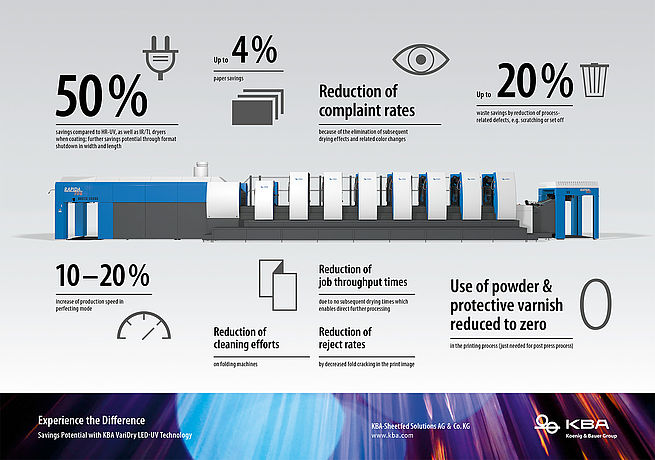
KBA-Sheetfed is one of the international technology leaders in the field of LED-UV. The first Rapida 106 with LED dryers went into production in mid-2014. Further milestones included the first medium-format perfector for 4-over-4 production with LED-UV at the end of 2014 and the first Rapida large format installation in 2015. In the meantime, some 50 half-, medium- and large-format Rapidas with LED drying are in use around the world. The majority of these installations can be found in Germany, Japan and France. But in Great Britain, Austria, Belgium, Italy, Poland, the USA and other countries, too, Rapidas with LED-UV facilities are proving increasingly popular, especially among commercial printers. Alongside classic five- and six-colour coater presses, numerous eight-colour perfectors have also been equipped with this future-oriented drying technology.
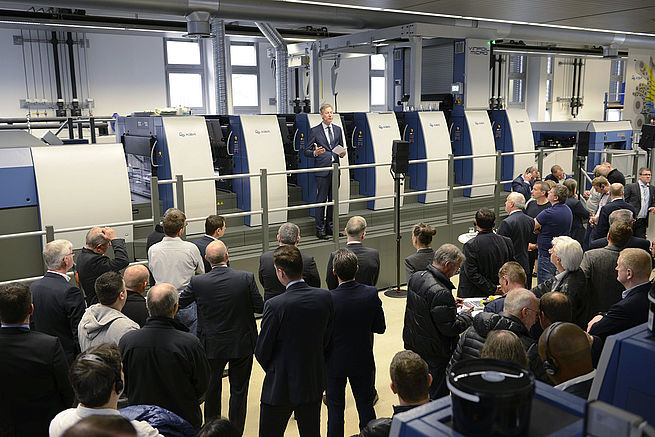
Process benefits speak for themselves
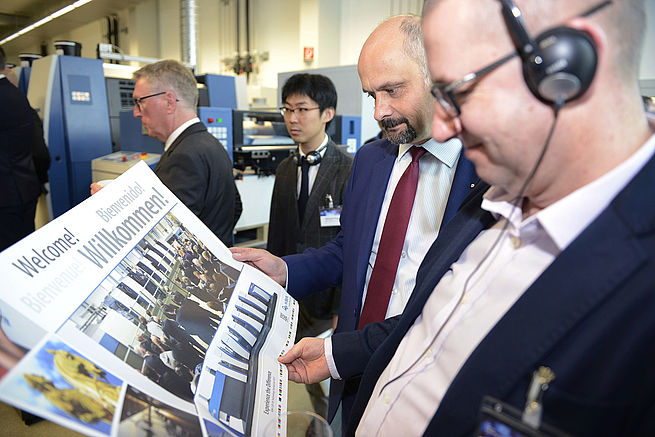
- 50 per cent energy savings compared to HR-UV or IR/hot-air drying for coating applications; further savings potential can be realised through job-specific matching of the active dryer format in both the length and width directions
- Up to 20 per cent less waste through the avoiding of scratches and set-off
- Fewer quality complaints due to drying effects or colour changes which only become visible later in the overall production process
- Up to 4 per cent paper savings
- 10 to 20 per cent higher production speeds in perfecting mode
- Faster job turnaround as the sheets can passed on immediately for further processing
- Lower rejection rates thanks to the reduced risk of fold cracking in the printed image
- Powder and protective coatings are no longer necessary
- Fewer problems and shorter cleaning times in downstream finishing
There are nevertheless critical voices to be heard in the branch.
Objections such as
- higher investment outlay for the dryers,
- higher ink costs and
- poorer de-inking of the printed products in later recycling
are often discussed. One important objective of the symposium at KBA-Sheetfed was thus to demonstrate the potential of the technology, to present current and expected developments and improvements in dialogue with the supplier industry, and to relieve the anxieties and reservations which naturally accompany any new technology.

Panel discussions with users and suppliers
Three panel discussion sessions were moderated by Klaus-Peter Nicolay as an independent print expert, branch analyst and publisher of the magazine Druckmarkt.
The first session with specialists from KBA-Sheetfed and further suppliers addressed the available system technology. Reports on practical experience, design solutions, handling recommendations and service topics were brought together under the headline “What does the LED-UV technology offer for a modern print company”.
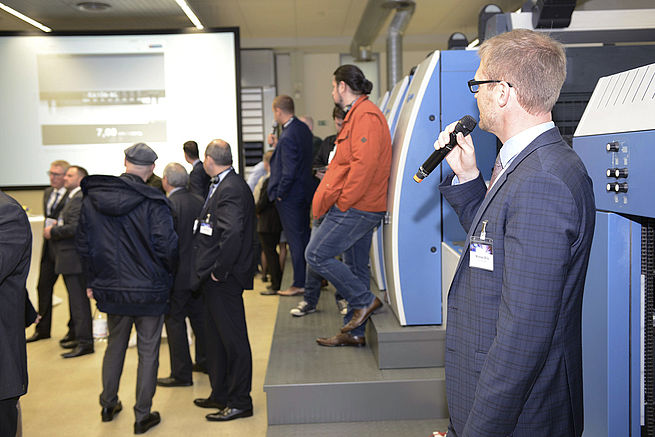
Tailored consumables packages were the topic of a second round of discussions with representatives from Toyo, Actega, Scheufelen, Papyrus, StoraEnso and Igepa. Alongside recent further developments in inks and coatings, the manufacturers spoke about standardised measuring and analysis methods, health and consumer protection, migration and food contact compliance, as well as the dimensional stability and de-inking properties of substrates. According to Dr. Wolfgang Rauh, head of department for materials and environmental protection at FOGRA, the success of de-inking seems to be dependent on the particular combination of ink and paper. In case of doubt, therefore, it is always advisable to consult with the ink and paper suppliers concerned.
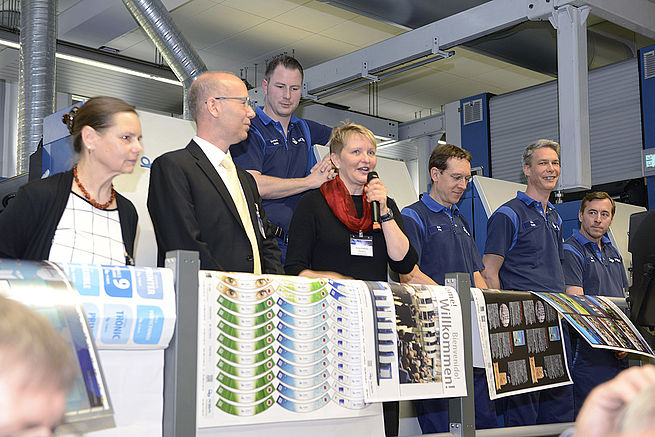
The third module was reserved for the users: Ingo Klotz from Druckerei Joh. Walch (Augsburg/Germany), Jürgen Ostendorf from Hofmann Druck (Nürnberg/Germany), Patrick Leus from Albe de Coker (Antwerp, Belgium) and Jonas Hoffmann from FarbWerk (Detmold/Germany) described the role played by the LED-UV technology in their business concepts. They also compared the ROI of LED-UV to that of conventional alternatives, and provided information on the attainable quality standards and energy efficiency when using the technology. One of the aspects mentioned was the extended colour space, which often spares the need to print spot colours. Significantly higher densities are achieved and the print quality on uncoated papers comes close to that otherwise associated with coated stocks. As a result, new customers can be targeted in the premium quality segment. At the same time, new marketing strategies and approaches are required. LED-UV printing, however, is able to serve as a strong regional USP, enabling users to stand out above their competitors. Many of the participants confirmed that the LED-UV technology had opened to door to new markets.
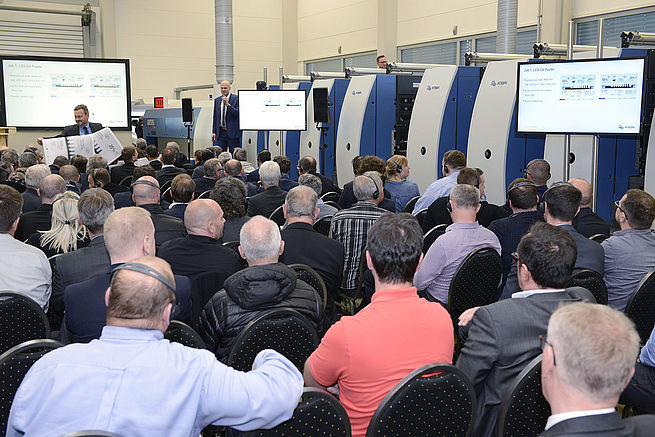
Print demonstrations confirm the experience of users
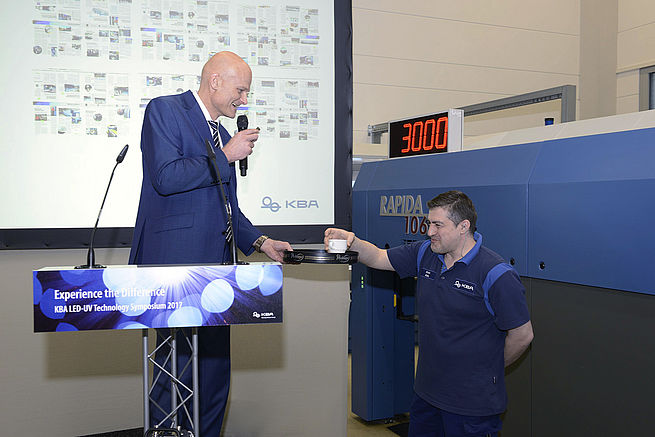
On the five-colour Rapida 75 PRO coater press, the focus was placed on production on uncoated papers with full ink coverage. It was also shown how the jobs could be passed on for immediate finishing on a Perfecta 132 TS high-speed cutter.
The production of inmould and self-adhesive labels, with and without cold foil, was presented on a six-colour Rapida 106 with coater tower. After the job with cold foil transfer, the press was converted for production with an opaque white primer. The final job was a cigarette pack forme on metallised card. All three images illustrated how LED-UV is gaining an every greater foothold also in packaging printing.
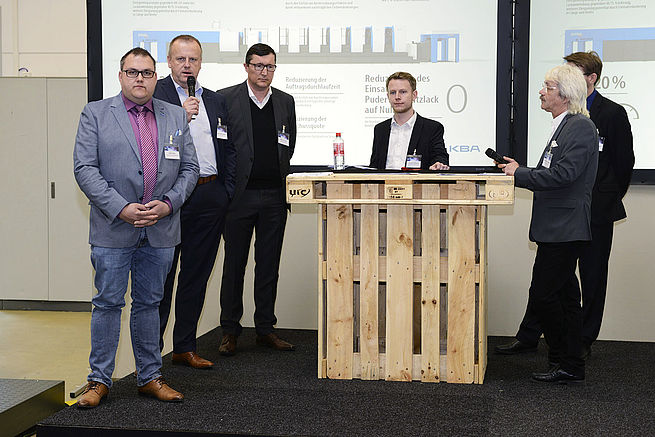
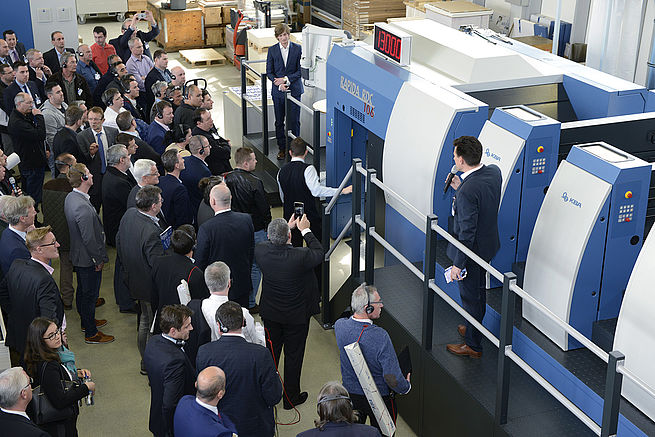
As a further highlight, KBA-Sheetfed demonstrated the die-cutting of packaging on a Rapida RDC 106 rotary die-cutter: For the first time with automatic stripping, a world novelty in a rotary process. After a fast job changeover, production continued with the kiss-cutting of self-adhesive labels. Job changeovers on the Rapida RDC 106 are significantly faster than on a flat-bed die-cutter – a further plus for the rotary die-cutter for corresponding applications.
An evening paddle-steamer excursion on the Elbe rounded off a very busy and informative day.
